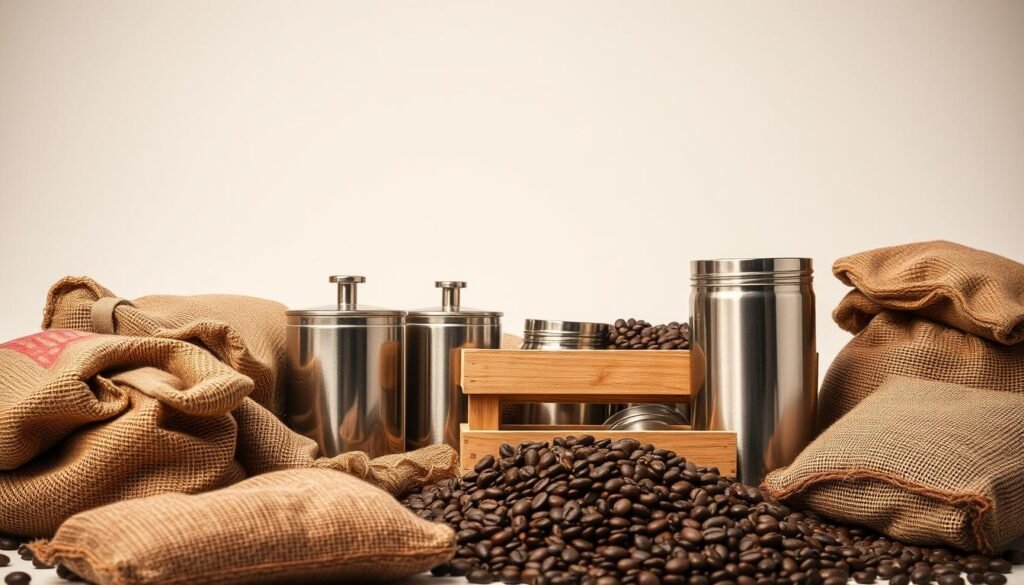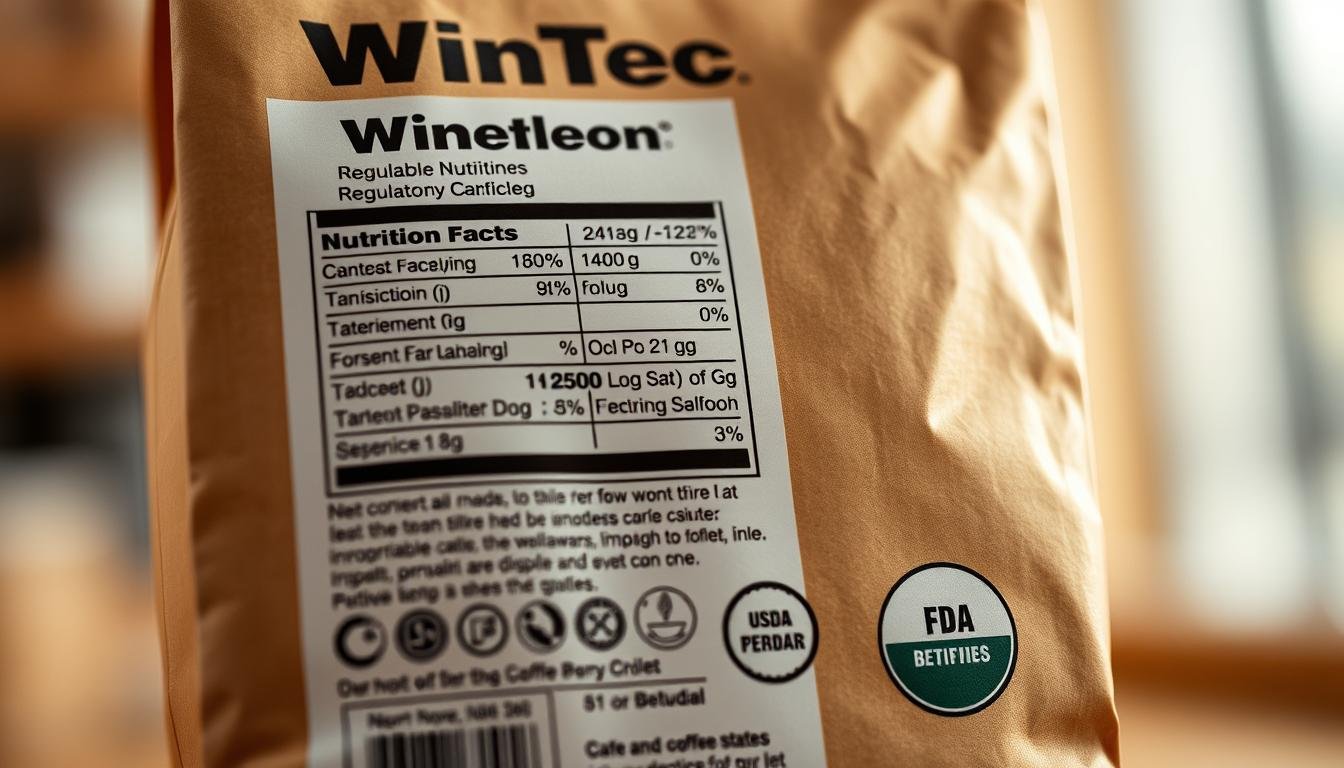Have you ever wondered what secrets are hidden behind the packaging of coffee beans that protect your favorite morning brew? The intricate world of coffee bean packaging involves much more than just a simple bag or container.
The Wintech packaging of coffee beans is a critical aspect of preserving quality and meeting strict regulatory standards in the United States. Specialty coffee packaging goes beyond mere aesthetics, serving as a critical barrier that protects the delicate flavors and aromas of your carefully sourced beans.
From FDA guidelines to USDA standards, coffee bean preservation requires meticulous attention to detail. Roasters and manufacturers must navigate complex labeling requirements that ensure consumer safety and product transparency.
Understanding these regulations is crucial for coffee producers, retailers, and consumers alike. Each package tells a story of quality, origin, and compliance that directly impacts the coffee experience you enjoy.
Key Takeaways
- FDA requires five essential pieces of information on coffee packaging labels
- Proper packaging of coffee beans protects product quality and freshness
- Regulatory compliance is mandatory for coffee bean manufacturers
- Packaging plays a critical role in preserving coffee’s flavor profile
- Consumer safety and transparency are primary goals of packaging regulations
Understanding the Packaging of Coffee Beans
Coffee packaging plays a critical role in preserving the quality and flavor of your favorite brew. With the global coffee market valued at over $100 billion, manufacturers are increasingly focused on innovative coffee storage solutions that protect the beans from environmental factors.

When it comes to packaging of coffee beans, several key considerations ensure optimal freshness and taste. Vacuum sealed coffee has emerged as a premier method for maintaining bean quality, protecting against oxygen, moisture, and light exposure.
Preserving Coffee Quality Through Packaging
Your coffee’s flavor depends significantly on how it’s packaged. The right packaging prevents:
- Oxidation that degrades bean quality
- Moisture contamination
- Loss of essential aromatic compounds
Types of Coffee Bean Packaging
Different packaging options cater to various coffee preservation needs:
| Packaging Type | Preservation Method | Typical Use |
|---|---|---|
| Vacuum Sealed Bags | Removes air completely | Long-term storage |
| Kraft Paper Bags | Allows minimal air circulation | Short-term retail packaging |
| Resealable Pouches | Provides repeated closure | Home storage |
Materials in Coffee Bean Packaging
Roast date labeling has become crucial in coffee packaging. Consumers now expect transparent information about their coffee’s freshness. Modern packaging materials like multi-layer plastics and specialized barrier films help maintain coffee storage solutions that preserve peak flavor.
By understanding these packaging techniques, you can ensure your coffee remains fresh, flavorful, and ready to brew from the moment it’s packaged to the last delicious cup.
Key Regulatory Standards for Packaging of Coffee Beans
Navigating the complex world of coffee packaging requires a deep understanding of regulatory standards that protect both consumers and producers. The United States has established comprehensive guidelines to ensure the safety, transparency, and quality of coffee packaging.

Coffee manufacturers must adhere to multiple regulatory frameworks that govern packaging and labeling. The Fair Packaging and Labeling Act (FPLA) mandates critical information on every coffee package.
FDA Guidelines for Coffee Packaging
The FDA sets strict requirements for coffee packaging to guarantee consumer safety and product integrity. Key aspects include:
- Clear product identity
- Accurate net contents declaration
- Complete ingredient listing
- Manufacturer contact information
Labeling Requirements for Coffee Beans
Precise labeling is crucial for resealable coffee packages. Your packaging must include:
- Origin of coffee beans
- Roast level description
- Organic certification (if applicable)
- Roast date
Degassing valves play a critical role in maintaining coffee quality. These specialized components allow carbon dioxide to escape while preventing oxygen from entering moisture barrier bags.
Compliance with USDA Standards
The USDA provides additional guidelines for specialty and organic coffee packaging. Manufacturers must demonstrate:
| Standard | Requirement |
|---|---|
| Organic Certification | Verified organic farming practices |
| Traceability | Complete supply chain documentation |
| Packaging Materials | Sustainable and food-safe materials |
By understanding and implementing these regulatory standards, coffee producers can create packaging that protects product quality while meeting all legal requirements.
Best Practices for the Packaging of Coffee Beans
Specialty coffee packaging has evolved dramatically in recent years, with brands focusing on preserving quality while meeting consumer expectations for sustainability. The United States coffee market demands innovative solutions that protect bean freshness and minimize environmental impact.
Modern coffee roasters understand that sustainable coffee packaging is no longer optional but essential. Wintech Package and other industry leaders are developing eco-friendly materials that reduce waste without compromising the protective qualities needed for premium coffee beans.
Sustainable Packaging Solutions
You can now find packaging options made from biodegradable materials like compostable kraft paper and recycled polymers. These sustainable coffee packaging techniques help reduce carbon footprints while maintaining the integrity of your favorite coffee beans.
Innovations in Coffee Bean Preservation
Advanced packaging technologies now incorporate one-way valves and specialized barrier films that protect beans from oxygen and moisture. Coffee companies frequently use continuous inkjet (CIJ) printers to label packages, ensuring traceability and compliance with industry standards.
Ensuring Optimal Freshness
Your coffee’s quality depends on proper packaging. Vacuum-sealed bags with resealable features and nitrogen-flushing techniques help extend shelf life and maintain the robust flavors that specialty coffee enthusiasts expect from their premium beans.







